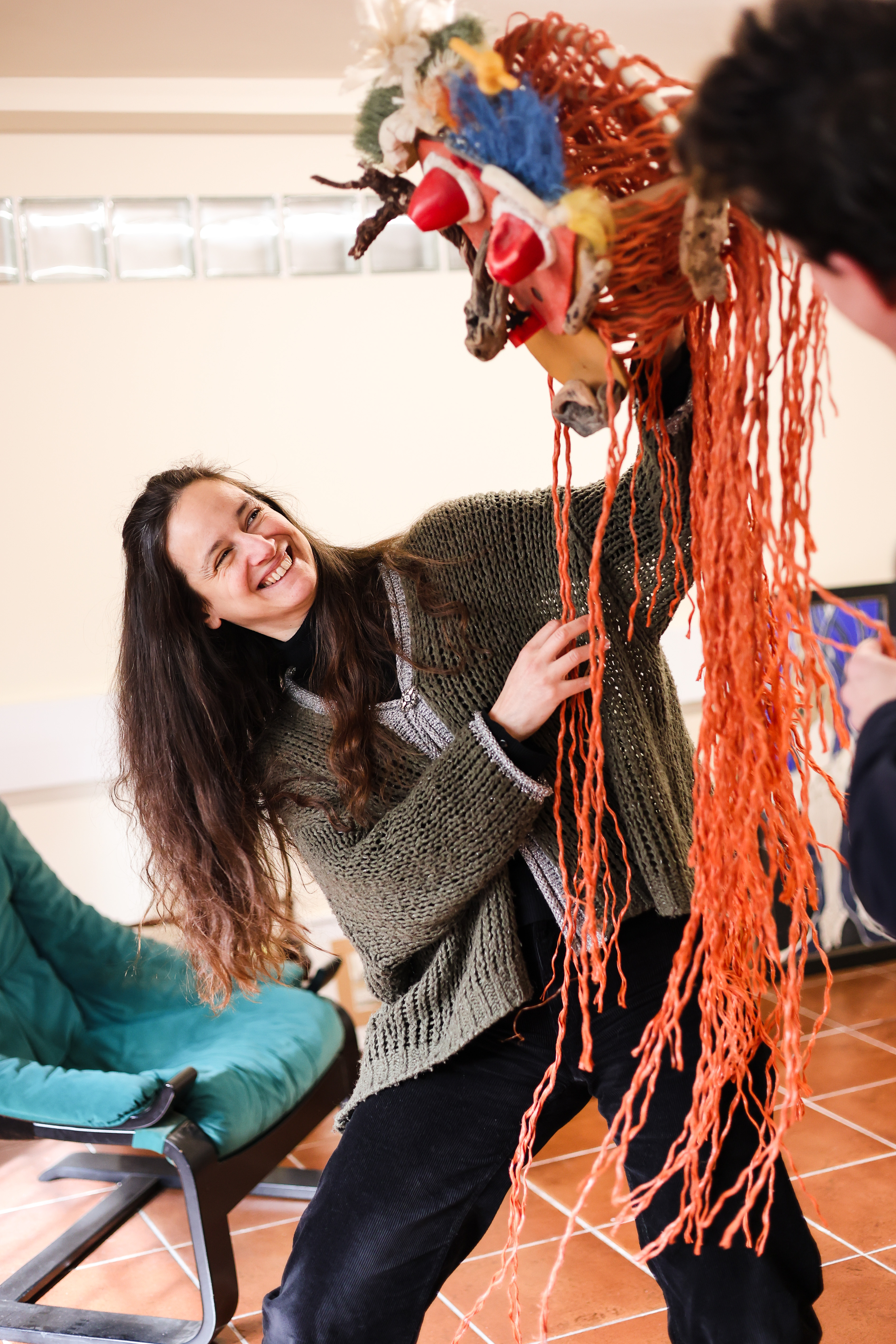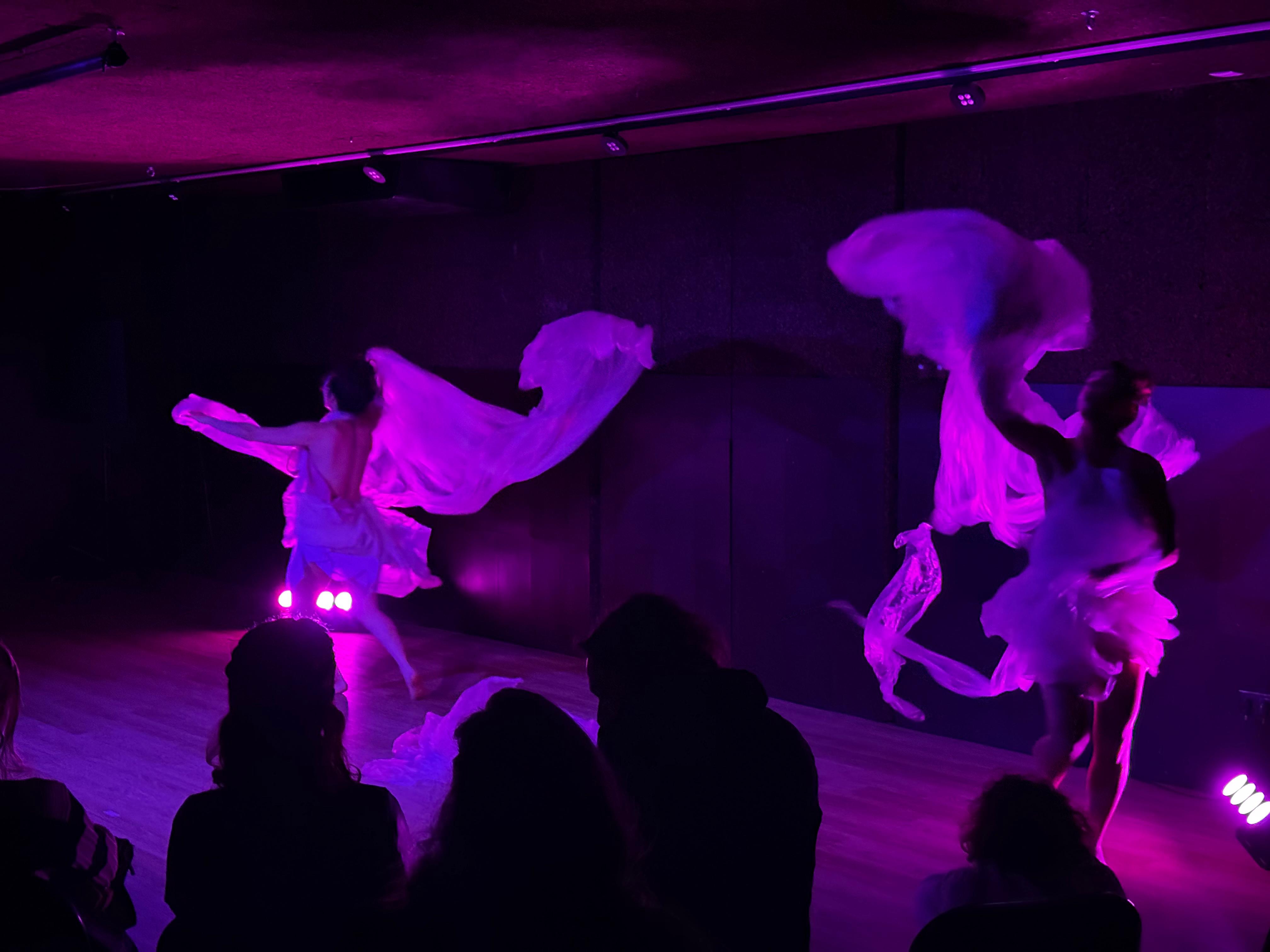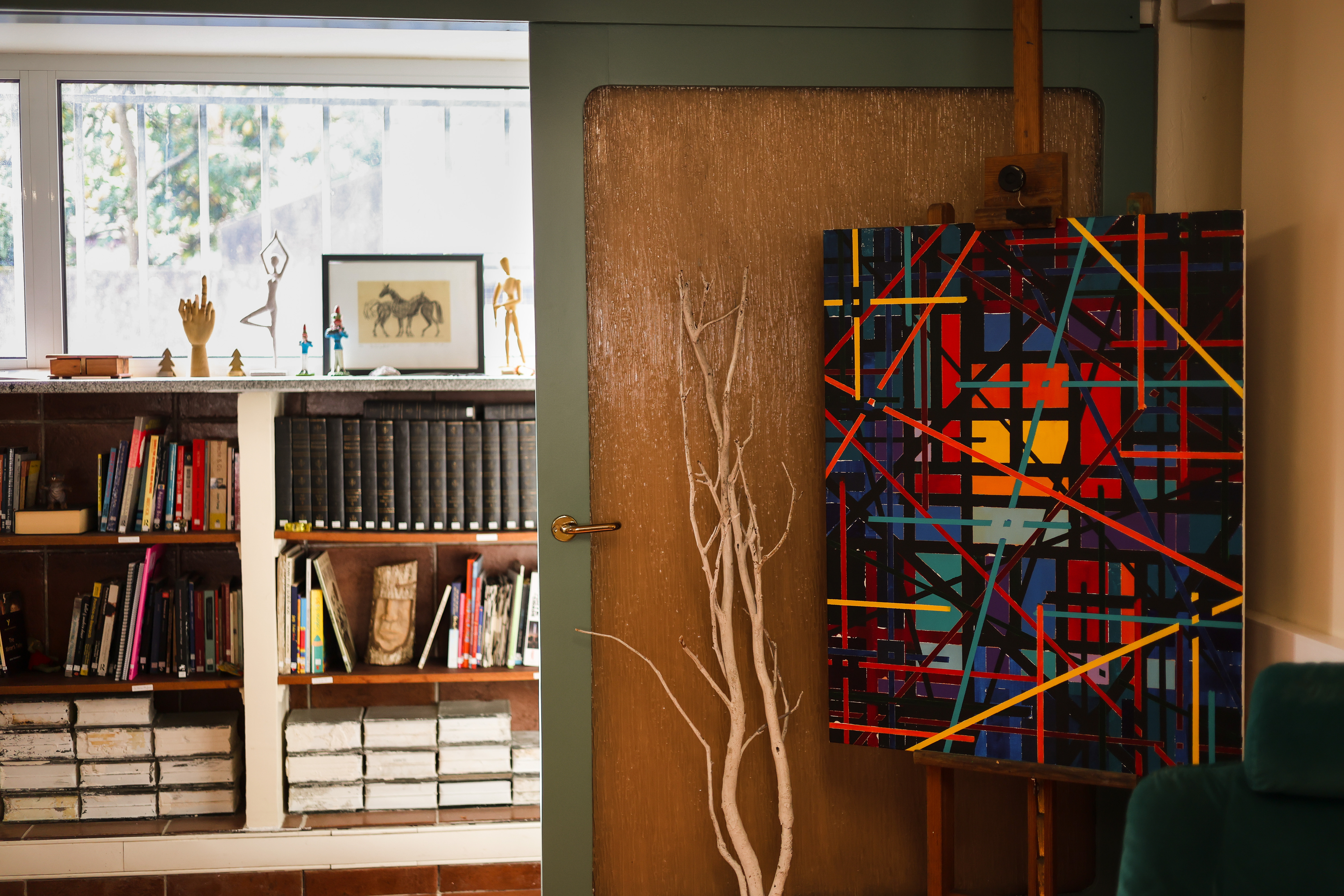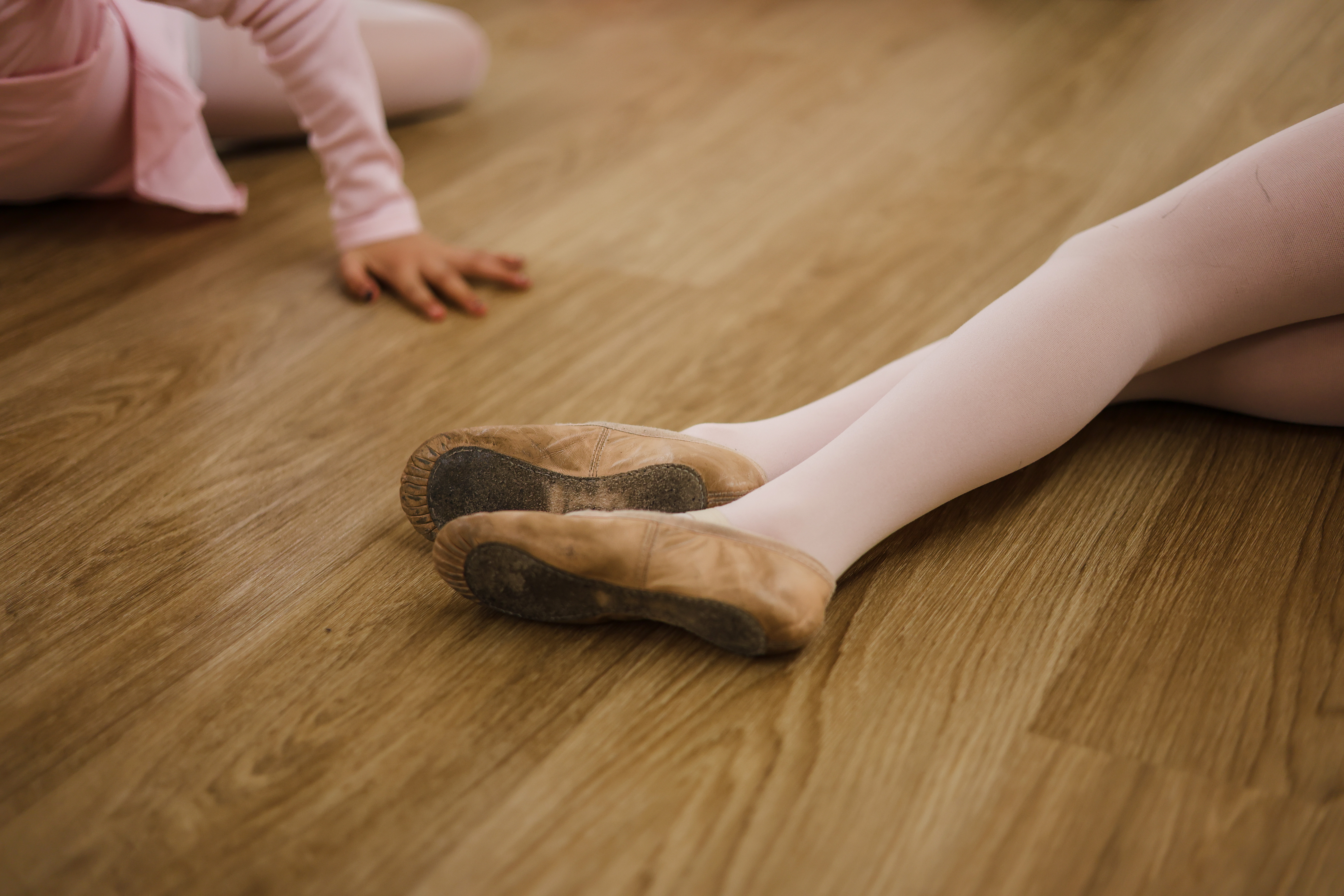EN

At 311 R. Duque de Saldanha, in Bonfim, there is a place where art breathes and expands in all directions. It's called PAZ - Performance Arts Zone and it's a creative space, a living organism that is constantly changing, born out of a desire for sharing and creative freedom.

Mariana Amorim © Inês Aleixo
Founded by Mariana Amorim and Tommy Luther, this centre is a meeting point between artistic languages. Here, dance, theatre, music, puppets, performance and visual arts don't just coexist - they intertwine. ‘Our main goal is to have the space full of people coming and going, and for it to function as a living organism, driven by artistic crossroads,’ says Mariana. ‘Not just dance, not just theatre, not just exhibitions or performances, but a mixture of all these forms of artistic expression.’
Diversity is one of the pillars of this project, which welcomes students of all ages. ‘We don't select by level, you don't need any kind of prior knowledge, just a willingness to experiment, learn and relate to the community,’ adds Tommy.
A stage for experimentation
PAZ hosts a dynamic programme of activities - dance and theatre classes, puppetry workshops, shows, exhibitions and workshops for children. But perhaps the project that best summarises the spirit of the space is It's Alive, a quarterly presentation where artists test out new ideas in a flexible and intimate format. ‘It's an open call that is open to collaboration with other structures,’ says Mariana.
‘Each show lasts a maximum of 15 minutes, but can be as short as 30 seconds. In each edition, the public can see five or six different performances in an hour,’ explains Tommy. ‘It's not a showcase, it's not a finished product; it's a laboratory, the audience sees it, tries it out, talks about what worked. And from there, collaborations can emerge and the project is moulded.’

© DR

© Inês Aleixo
The first edition revealed the need to better structure the exchange between audience and artists. ‘We realised that people didn't interact naturally without us asking them direct questions,’ says Tommy. ‘Now we take them to a space where they can sit and reflect together, in a spirit of pedagogical and positive sharing.’
This conversation space also has a library for the students who frequent the space, and ends up being a social room where workshops and parties take place, which can be adapted to different needs.
Bonfim is on the boil
The choice of Bonfim to host PAZ was no coincidence; this neighbourhood is buzzing. In recent years, it has been the centre of new cultural initiatives, offering the ideal context for a project like this. ‘It's an area with a special energy; there are still many families living here, it's not just a place to pass through. This allows us to create a real connection with the community,’ Mariana emphasises.
This closeness is reflected in the partnerships they have established. ‘The Bonfim Parish Council has been a great ally. And having schools nearby is also fortunate,’ adds Tommy. ‘PAZ works on three fronts: professional, with classes and shows for artists; educational, with training for children and young people; and community, opening up the space to the city.’
The challenge of creating an artistic space
Maintaining an independent cultural project involves daily challenges. ‘The multiplication of tasks is the biggest one,’ admits Mariana. ‘We're a small team and we do everything: posters, box office, lights, production. Sometimes we start running without having learnt to walk first. But we learn. We fall down and we get up,’ she adds.
‘There comes a point when you realise that it's not just a question of will, there's an obligation to share,’ Tommy argues. ‘Art isn't something you keep in your pocket. Like those magic beans in stories: if you hide them, they die. You have to plant them, pass them on.’

Ballet class © Inês Aleixo
Remove layers: An invitation to the city
For those who see contemporary art as something distant and hermetic, PAZ has a simple answer: play and dream. ‘Children come in here and within minutes they've taken over the space,’ says Mariana. ‘Adults lose that ability. They forget to play. And what we do here is open up a space for that. To explore, without fear.’
‘We've all been puppeteers before. We've sung, we've danced, we've created music. But at some point we say to ourselves, ‘I'm an adult now, I can't play any more’,’ reflects Tommy. ‘But the memory of the body is there. We just need a push to rediscover that freedom.’ - That ‘push’ is there, on R. Duque de Saldanha, waiting for anyone who wants to get moving.
Share
FB
X
WA
LINK
Relacionados


